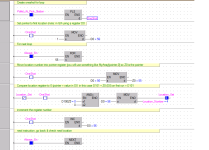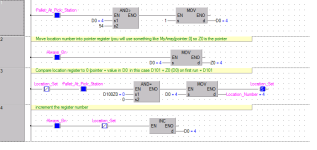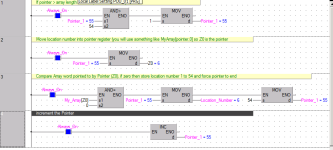Hi all,
New to the forum and first time posting, so be gentle please...
I'm currently creating a virtual factory on Factory I/O, using RSLogix 5000 to control it. I am trying to sort the storage rack code before moving on to add conveyors and sorting stations etc...
Currently I have a stacker crane moving pallets into storage racks, filling the location and returning to the home position to retrieve the next pallet, as it arrives.
I'm using a PEC and counter to keep track of the incoming pallets and then filling up the storage spaces 1 by 1 (Not ideal, I know).
My question is, how do I track what storage locations are already full and then use that information to determine where to put the next pallet?
A stacker crane on the other side of the rack will unload the pallets from the filled locations, hopefully using FIFO, but I need to track the storage unit data first of all.
Thanks in advance,
RossT93.
New to the forum and first time posting, so be gentle please...
I'm currently creating a virtual factory on Factory I/O, using RSLogix 5000 to control it. I am trying to sort the storage rack code before moving on to add conveyors and sorting stations etc...
Currently I have a stacker crane moving pallets into storage racks, filling the location and returning to the home position to retrieve the next pallet, as it arrives.
I'm using a PEC and counter to keep track of the incoming pallets and then filling up the storage spaces 1 by 1 (Not ideal, I know).
My question is, how do I track what storage locations are already full and then use that information to determine where to put the next pallet?
A stacker crane on the other side of the rack will unload the pallets from the filled locations, hopefully using FIFO, but I need to track the storage unit data first of all.
Thanks in advance,
RossT93.






